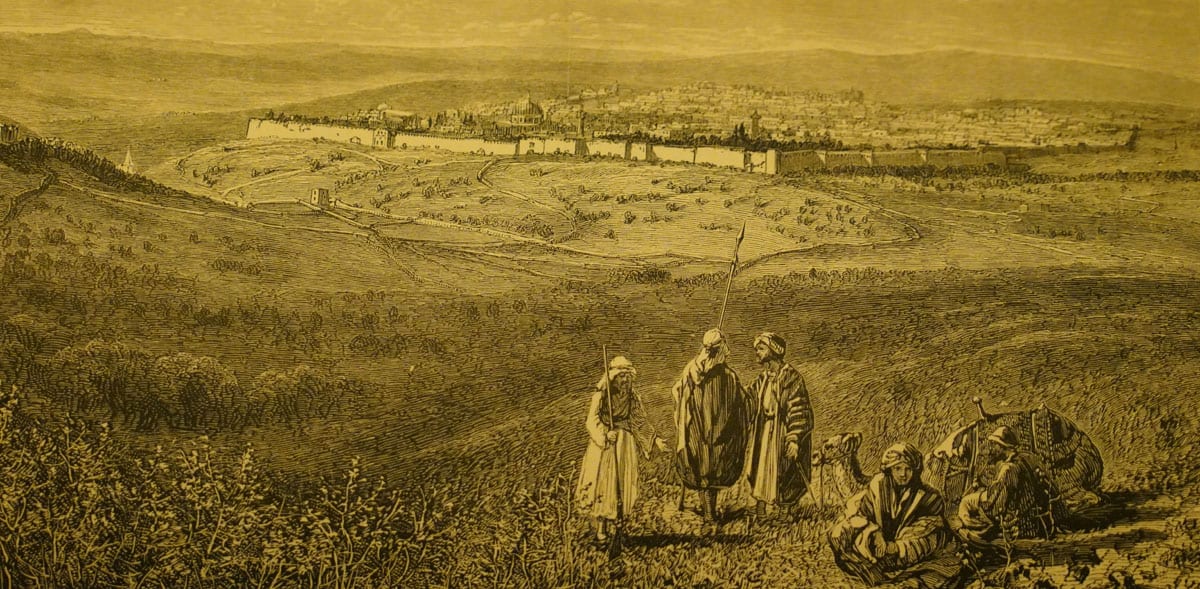This is a very good question. We aren’t born knowing who existed before us. Maybe we didn’t even know all our grandparents, yet we know they existed. The further we go back, the more work it takes to gather historical information about a person.
When it comes to Jesus, perhaps the most well-known person in history, yes we do have proof. While we weren’t there to touch his hands, we have more historical proof about Jesus than just about any other person in history. Here we will uncover some of those facts.
What Level of Proof is Needed?
George Washington is probably the most popular person in the history of the United States, but if someone asked you to prove it with historical documents, could you? Let’s be a skeptic for a moment…
- George Washington didn’t sign the Declaration of independence. How could the first President of the U.S. not sign such an important document? He must have been invented by the colonies as a symbol of their revolution. Prove to me he signed it and I will believe you.
See how easy it is for a skeptic to introduce a false premise without introducing any evidence himself while making others try to prove it. When they can’t prove this the skeptic looks like he knows more.
Fact: George Washington did not sign the declaration of Independence. The reason is that he was not President yet. He was a general out on the battlefield defending the states against the British, not a politician yet. It is an unreasonable request to ask for this proof.
Now, if the skeptic told you that you could not use any documented sources from the United States because the U.S. is biased in favor of George Washington, would you still be able to provide proof of his existence?
George Washington signed the Constitution of the United States in 1787, but according to the skeptic, you can not use that as proof because it comes from U.S. sources in favor of their own President.
- At that level, we would not be able to prove anyone existed except perhaps the most powerful kings and emperors who intermarried with other countries or lost in battles, in which case the other country would document it with pride.
It becomes even more difficult when we realize people in another country may not have any connection with a U.S. President. They may have been brought up in a different culture. geography, and history. In their country, they may have never written about U.S. Presidents or had any reason to. Likewise, someone from the U.S. may not be aware of some historical leaders of other countries.
This does not mean these people did not exist. It just means that the most evidence of a historical person will come from the local culture, geography, and people where they lived. The further we getaway, the more difficult.
- This is something to consider when we compare a 21st-century historian skeptic to the documents closest to the culture, time, and region where Jesus lived.
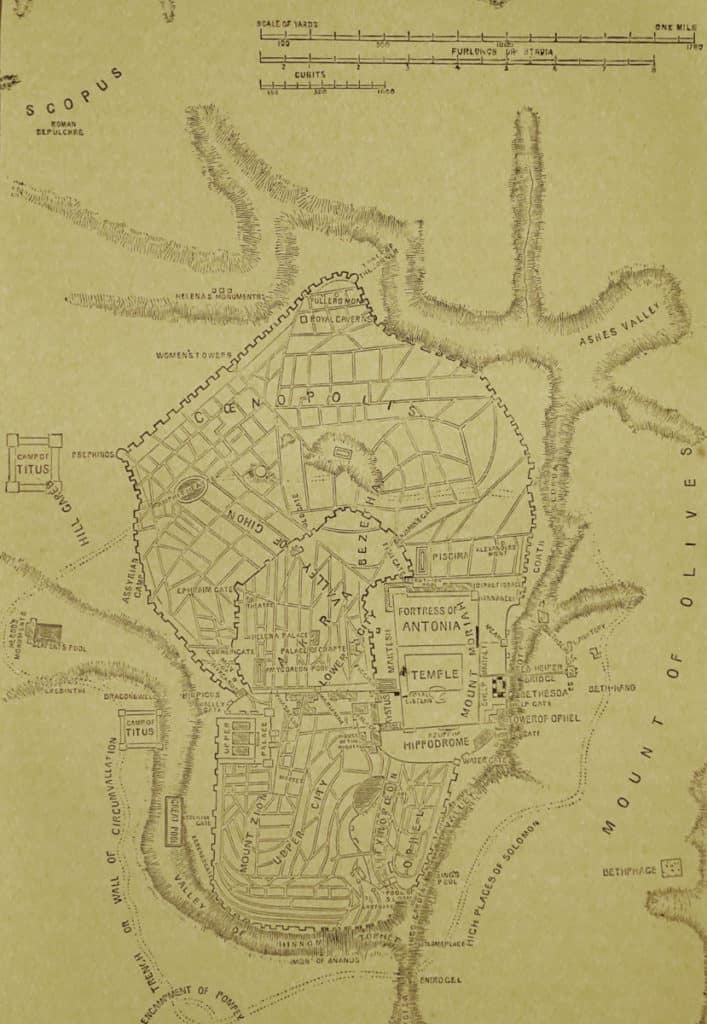
Prove Yourself
If you were to try and prove your own existence only from documents but could not provide any from the country you live in, or the people you know, would you be able to prove your own existence? (I would fail). Why would another country provide proof of your birth and the events of our life?
Now imagine if someone didn’t like you, or didn’t want you to exist. Would they provide any proof for you? Not likely unless by accident.
Let’s Provide Some Evidence
Several cultures were present at the time of Jesus’s life. The Jews, The Romans, the newly converted Jewish Christians, the non-Jewish Gentile Christians from Greece, Africa, Syria, and Asia Minor.
Roman Sources
While we do not expect to find any facts of Jesus out-side of local Christian sources, we actually find some compelling evidence from a Roman historian who doesn’t like Christians.
Tacitus
Publius/Gaius Cornelius Tacitus lived from c.56 – c.120 AD. He was a Roman orator and historian who wrote several volumes of Roman history covering the periods of AD 14-68 (the Annals) and AD 69- 96 (Historiae).
Throughout the books of the Annals, Tacitus covers the history of the Roman Emperors Augustus Caesar, Tiberius, Caligula, Claudius, and Nero.
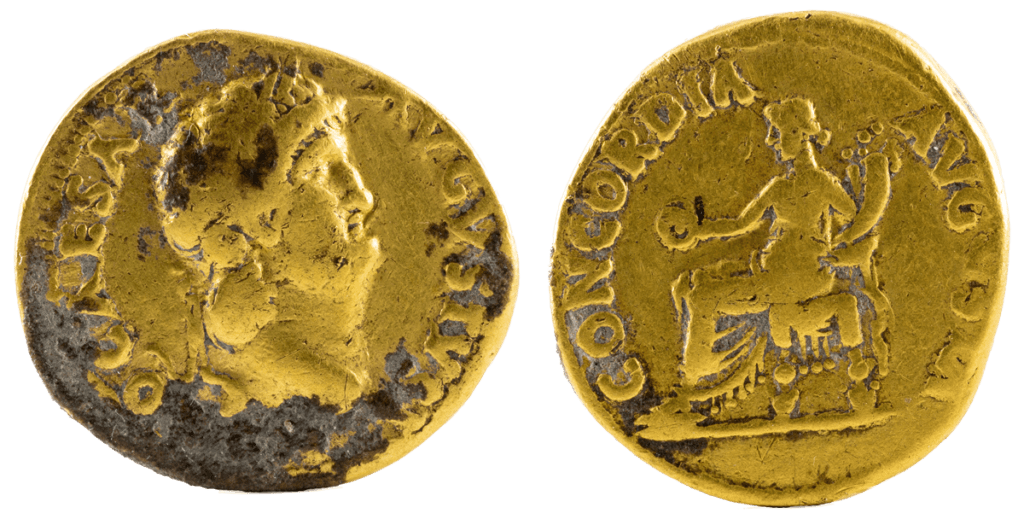
Tacitus history about the Emperor Nero
While covering the emperor Nero 46-56 AD Tacitus explains the problems of Nero, his extravagance, his intense ego, and his moral depravity that had no bounds.
“The Annals” by Tacitus, Book XV, section 37
Nero, who polluted himself by every lawful or lawless indulgence, had not omitted a single abomination which could heighten his depravity
Tacitus cites specific incidents of Nero’s reign, many of which were considered immoral, even by Roman standards. Nero executed his own mother, castrated a former slave and married him, propagated immoral acts in public, and wanted to rebuild Rome in his own name.
This aspect of Nero wanting to rebuild Rome gets us closer to our evidence. In A.D. 64 a great fire broke out in Rome, the worst it had ever seen in its history. Tacitus describes it in detail, the fire rapidly spreading, the loss of life, and even an effort to keep the blaze going.
“The Annals” by Tacitus, Book XV, sections 38-42
It had its beginning in that part of the circus which adjoins the Palatine and Caelian hills… the blaze in its fury ran first through the level portions of the city, then rising to the hills, while it again devastated every place below them

And no one dared to stop the mischief, because of incessant menaces from a number of persons who forbade the extinguishing of the flames.
At last after five days, an end was put to the conflagration at the foot of the Esquine jill, by the destruction of all buildings on a vast space, so that the fire was met by clear ground and an open sky. But before people had laid aside their fears, the flames returned, with no less fury this second time.
to this conflagration there attached the greater infamy because it broke out on the AEmilian property of Tigellinus, and it seemed the Nero was aiming at the glory of founding a new city and calling it by his name.
Nero, meanwhile availed himself of his country’s desolation, and erected a mansion
It is within this context that Tacitus briefly mentions Christians.
Tacitus is concerned about the affairs of Roman history and Roman beliefs. He is not a supporter of Christianity and they are only mentioned in as much as who they were, how they came to Rome under the reign of Nero, and how he tried to make them the scapegoats for the fire. It is a critical piece of evidence of Jesus (Christ/Christus).
“The Annals” by Tacitus, Book XV, section 44.
…Consequently, to get rid of the report, Nero fastened the guilt and inflicted the most exquisite tortures on a class hated for their abominations, called Christians by the populace. Christus, from whom the name had its origin, suffered the extreme penalty during the reign of Tiberius at the hands of one of our procurators, Pontius Pilatus, and a most mischievous superstition, thus checked for the moment, again broke out not only in Judaea, the first source of the evil, but even in Rome, where all things hideous and shameful from every part of the world find their center and become popular. Accordingly, an arrest was first made of all who pleaded guilty; then, upon their information, an immense multitude was convicted, not so much of the crime of firing the city, as of hatred against mankind. Mockery of every sort was added to their deaths. Covered with the skins of beasts, they were torn by dogs and perished, or were nailed to crosses, or were doomed to the flames and burnt, to serve as a nightly illumination, when daylight had expired.Nero offered his gardens for the spectacle, and was exhibiting a show in the circus, while he mingled with the people in the dress of a charioteer or stood aloft on a car. Hence, even for criminals who deserved extreme and exemplary punishment, there arose a feeling of compassion; for it was not, as it seemed, for the public good, but to glut one man’s cruelty, that they were being destroyed.
Tacitus does not outright say Nero gave the order to burn Rome but includes the reports of his suspicion.
This is a critical fact!!!
Tacitus had no Christian agenda. He appears to dislike Christianity from the passage, yet provides us with evidence that Jesus Christ (Christus) was real, was crucified by Pontius Pilate in the reign of Tiberius, and had followers from Judaea that made it to Rome by A.D. 64, and Nero persecuting them.
Tacitus refers to Jesus Christ (Christus) as being put to death by the extreme penalty (crucifixion was the extreme penalty of the Romans)
These facts all agree with Church tradition that Peter and Paul and other Christians were killed in Rome during the time of Nero’s persecution.
Jewish Sources: Josephus Flavius
Josephus Flavius lived from A.D. 37-100. There are various opinions on whether he was on the Roman side or the Jewish side of history.
Josephus originally fought as a Jew against the Romans but was captured around 67 A.D. Within 2 years he was granted his freedom by the new emperor Vespasian, even taking his family name of Flavius, fueling questions as to his allegiance to Rome or Judaea.
Our point here is that Josephus was not Christian, not promoting Christians beliefs, yet gives evidence of Jesus in more than one way.

In his work of Antiquities, Josephus describes events of the region from Rome to Babylon, with a focus on the local Jewish Kings with their internal politics and interactions with external powers, especially the Romans. Herod & Philip were ruling the Jewish territories. The Romans were enacting taxes that some Jews used as a means to stir up revolt after revolt, eventually leading to the destruction of the Jerusalem which Josephus witnessed from the side of the Romans.
Josephus switches perspectives often, sometimes from the view of the Romans, sometimes from the view of the Jews, sometimes even a favorable view from non-Jews, often pointing out how corruption and violence escalated to the eventual end of the Jewish state.
Among some of the local details, he talks about various incidents during Pontius Pilate’s time in Jerusalem, one section mentioning Jesus…
Antiquities Book 18, Chapter 3, paragraph 3.
Now there was about this time Jesus, a wise man, if it be lawful to call him a man; for he was a doer of wonderful works, a teacher of such men as receive the truth with pleasure. He drew over to him both many of the Jews and many of the Gentiles. He was [the] Christ. And when Pilate, at the suggestion of the principal men amongst us, had condemned him to the cross, those that loved him at the first did not forsake him; for he appeared to them alive again the third day; as the divine prophets had foretold these and ten thousand other wonderful things concerning him. And the tribe of Christians, so named from him, are not extinct at this day.
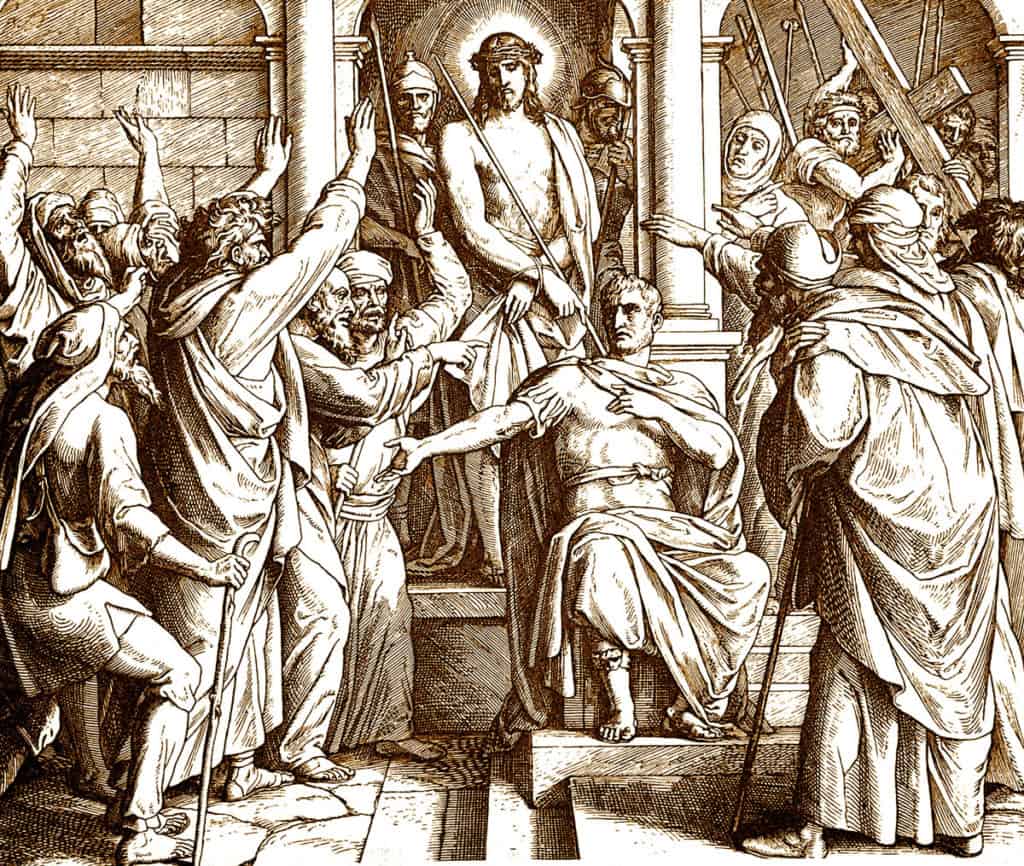
This is a 2nd critical fact!!!
- Josephus describes Pontius Pilate as causing many difficulties for the Jews such as desecrating the Temple with Roman images. It is in this context that he gives a favorable account of Jesus and Christians, but also to show Pilate being in a continuous midst of escalating problems between Jews and Romans.
- Skeptics questioning if this part of the document is authentic would simply need to show an earlier version that does not have the section. Otherwise, it is historical proof vs. their opinion.
For now, our interest here is that Jesus was real and was crucified. Josephus, like Tacitus, states that as a fact. If that is not enough, Josephus provides two other sections elsewhere mentioning Jesus and those close to him.
Josephus mentions John the Baptist…
Antiquities Book 18, Chapter 5, paragraph 2.
Now some of the Jews thought that the destruction of Herod’s army came from God, and that very justly, as a punishment of what he did against John, that was called the Baptist. For Herod slew him, who was a good man, and commanded the Jews to exercise virtue, both as to righteousness toward one another and piety toward God, and so to come to Baptism.
Josephus also mentions Jesus in connection to his brother (brethren) James.
Festus was now dead, and Albinus was but upon the road; so he assembled the sanhedrin of judges, and bought before them the brother of Jesus, who was called Christ, whose name was James, and some others [or some of his companions]; and when he had formed an accusation against them as breakers of the law, he delivered them to be stoned.
- Josephus is not a Christian and is not pushing Christian ideas so this is another important independent fact of Jesus.
This is a 3rd and 4th critical fact!!!
Eye-Witnesses
Now we will turn our attention to some eye-witnesses and what they wrote. I think it is helpful to keep in mind that we are not likely to find non-Christian eyewitnesses because the sheer fact of being an eye witness to Jesus, make most people Christians and the others would not write about it.
- It would be a false premise to expect a non-Christian eye witness
Eye Witnesses are also a key part of proof and we have some of them as well. Note: We shouldn’t expect any non-Christian eyewitnesses because if they knew enough to believe in Jesus and write it down, we would call them Christian.
Matthew
A Tax collector who became one of Jesus’ followers. In his gospel, Matthew writes the proof of Jesus’ family ancestry. The Jews would have required proof that Jesus was from the line of Judah in order to have any claim about being the Messiah. Matthew provides the proof.
Matthew 1:1-17
The Genealogy of Jesus.
1 The book of the genealogy of Jesus Christ, the son of David, the son of Abraham.
2 Abraham became the father of Isaac, Isaac the father of Jacob, Jacob the father of Judah and his brothers.
3 Judah became the father of Perez and Zerah, whose mother was Tamar. Perez became the father of Hezron, Hezron the father of Ram,
4 Ram the father of Amminadab. Amminadab became the father of Nahshon, Nahshon the father of Salmon,
5 Salmon the father of Boaz, whose mother was Rahab. Boaz became the father of Obed, whose mother was Ruth. Obed became the father of Jesse,
6 Jesse the father of David the king.
David became the father of Solomon, whose mother had been the wife of Uriah.
7 Solomon became the father of Rehoboam, Rehoboam the father of Abijah, Abijah the father of Asaph.
8 Asaph became the father of Jehoshaphat, Jehoshaphat the father of Joram, Joram the father of Uzziah.
9 Uzziah became the father of Jotham, Jotham the father of Ahaz, Ahaz the father of Hezekiah.
10 Hezekiah became the father of Manasseh, Manasseh the father of Amos, Amos the father of Josiah.
11 Josiah became the father of Jechoniah and his brothers at the time of the Babylonian exile.
12 After the Babylonian exile, Jechoniah became the father of Shealtiel, Shealtiel the father of Zerubbabel,
13 Zerubbabel the father of Abiud. Abiud became the father of Eliakim, Eliakim the father of Azor,
14 Azor the father of Zadok. Zadok became the father of Achim, Achim the father of Eliud,
15 Eliud the father of Eleazar. Eleazar became the father of Matthan, Matthan the father of Jacob,
16 Jacob the father of Joseph, the husband of Mary. Of her was born Jesus who is called the Messiah.
17 Thus the total number of generations from Abraham to David is fourteen generations; from David to the Babylonian exile, fourteen generations; from the Babylonian exile to the Messiah, fourteen generations.
Matthew also provides details of Jesus’ death…
Matthew 27:1-2 ,
Jesus Before Pilate.
1 When it was morning, all the chief priests and the elders of the people took counsel against Jesus to put him to death.
2 They bound him, led him away, and handed him over to Pilate, the governor.…
26 Then he released Barabbas to them, but after he had Jesus scourged, he handed him over to be crucified.
- Matthew’s witness agrees with Tacitus and Josephus, that Jesus was crucified under Pontius Pilate.
Peter/Mark
Peter didn’t write a Gospel but Mark was his disciple and he wrote of the crucifixion…
Mark 15: 1, 14-15
1 As soon as morning came, the chief priests with the elders and the scribes, that is, the whole Sanhedrin, held a council. They bound Jesus, led him away, and handed him over to Pilate.
…
14 Pilate said to them, “Why? What evil has he done?” They only shouted the louder, “Crucify him.”
15 So Pilate, wishing to satisfy the crowd, released Barabbas to them and, after he had Jesus scourged, handed him over to be crucified.
- Mark’s witness agrees with Tacitus and Josephus that Jesus was crucified under Pontius Pilate
Paul/Luke
Paul didn’t write a Gospel but Luke was his disciple and did. Luke recorded many events of Jesus’ life from various eye witness accounts. He writes of the crucifixion…
Luke 23:1, 23-24
1 Then the whole assembly of them arose and brought him before Pilate.
…
23 With loud shouts, however, they persisted in calling for his crucifixion, and their voices prevailed.
24 The verdict of Pilate was that their demand should be granted.
25 So he released the man who had been imprisoned for rebellion and murder, for whom they asked, and he handed Jesus over to them to deal with as they wished.
Luke’s account agrees with Tacitus and Josephus, that Jesus was killed by crucifixion under Pontius Pilate.
John
John was one of Jesus’ Apostles. He wrote an eye witness account about Jesus’ life and the crucifixion…
John 19:7-16
7 The Jews answered, “We have a law, and according to that law he ought to die, because he made himself the Son of God.”
8 Now when Pilate heard this statement, he became even more afraid,
9 and went back into the praetorium and said to Jesus, “Where are you from?” Jesus did not answer him.
10 So Pilate said to him, “Do you not speak to me? Do you not know that I have power to release you and I have power to crucify you?”
11 Jesus answered [him], “You would have no power over me if it had not been given to you from above. For this reason the one who handed me over to you has the greater sin.”
12 Consequently, Pilate tried to release him; but the Jews cried out, “If you release him, you are not a Friend of Caesar. Everyone who makes himself a king opposes Caesar.”
13 When Pilate heard these words he brought Jesus out and seated him* on the judge’s bench in the place called Stone Pavement, in Hebrew, Gabbatha.
14 It was preparation day for Passover, and it was about noon. And he said to the Jews, “Behold, your king!”
15 They cried out, “Take him away, take him away! Crucify him!” Pilate said to them, “Shall I crucify your king?” The chief priests answered, “We have no king but Caesar.”
16 Then he handed him over to them to be crucified.
- John’s account agrees with Tacitus and Josephus that Jesus was crucified killed by Pontius Pilate.
These give us 2 direct Eye Witness Accounts (Matthew and John) and 2 writing for various eyewitnesses (Mark and Luke).
- The Gospel writers agree with our non-Christian sources, Tacitus and Josephus.
- The Christians who were eyewitnesses of Jesus and risked their lives to continue as His followers
- Jesus dying on a cross was not their idea. It was not a figment of the imagination. They were devastated by it. They did not want their leader killed but were describing the reality of Roman capital punishment, crucifixion.
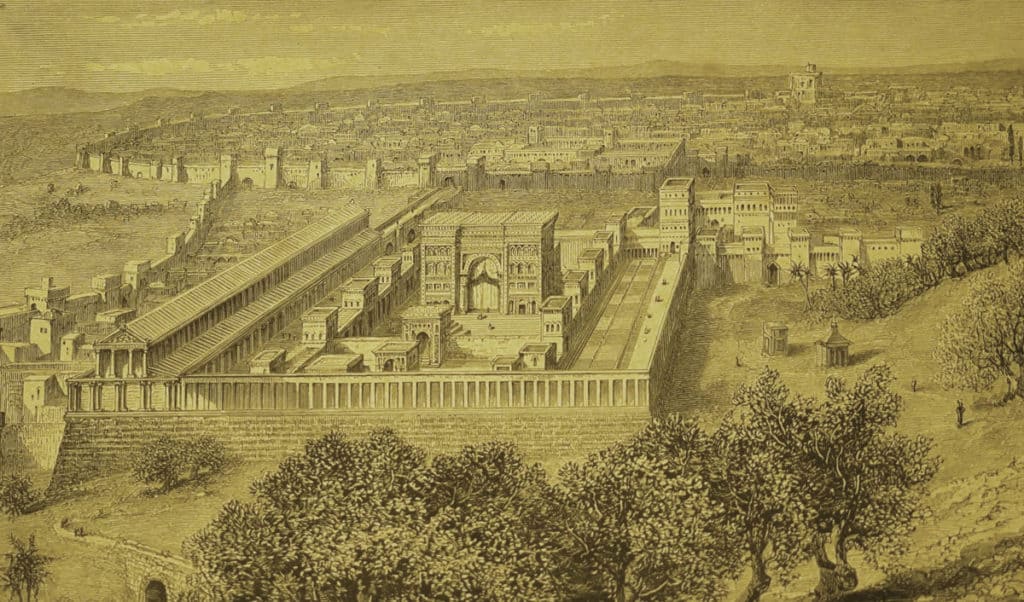
The crucifixion site was outside the walls.
Summary
- For Romans, Jews, and Christians, who were there, Jesus was a real human person who died by crucifixion.
- With several non-Christian sources of the 1st century corroborating the existence of Jesus we have a pretty clear case of evidence that Jesus was real and that He was crucified.
- This proof exceeds reasonable burdens of proof because we used people who were not even Christian to provide the evidence.
- If someone requires a higher proof of evidence, it would be hard for them to prove George Washington or their grandparents existed.
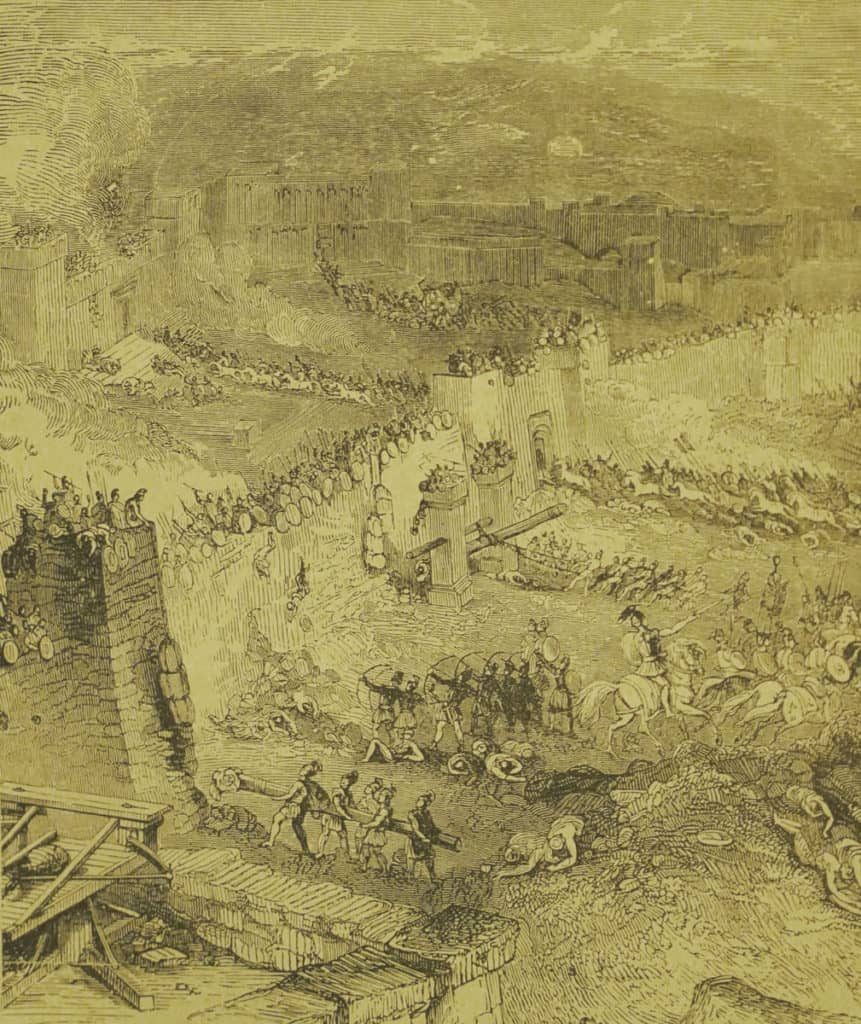
Later Doubters
At some point, a skeptic can fall into the trap of doubting anything. We presented some clear historical facts to support our case. The Romans, Jews, and Christians of the 1st century all agree Jesus was real and He was crucified.
However, there are later groups in history that have tried to re-surface the doubt.
Gnostics
Gnostics of the 2nd and 3rd centuries AD began to think of the spiritual as good and all material as bad. They started to believe that Jesus was spiritual but could not have a human body.
As soon as the Church was allowed to practice openly (Edict of Milan 313 AD) the ideas of the Gnostics were condemned at the council of Nicaea (325 AD)
Nestorians
Nestorius also tried to separate the humanity of Jesus from the divinity of Jesus, claiming the spiritual Jesus could not suffer nor be crucified, while the human Jesus was. The Church also condemned this distortion and Nestorius was exiled to Arabia.
Islam
Unfortunately, Mohammed’s first interactions with Christians were with splinter groups of Nestorians in Arabia. It seems Mohammed drew from what he knew of old testament prophets and Nestorians in thinking Jesus was not crucified.
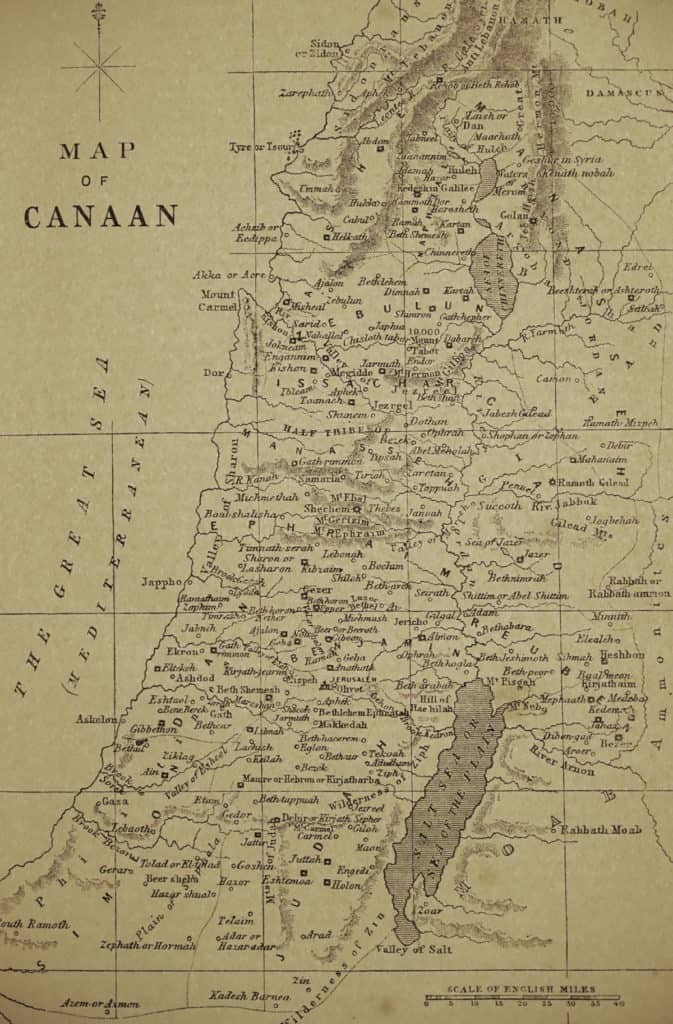
Summary
The evidence of the Jews, the Romans, and the Christians lead us to conclude Jesus was real and was crucified.
Please consider the historical proof that was provided with specific details, not speculation which uses opinions.
Style of Writing
I have heard some historians and skeptics question the authenticity of ancient documents because of differences in writing style within a document. Unfortunately this idea is filled with more opinion than fact.
- When I wrote my first book I was switching between various styles and points of perspective. It was not uniform. In several cases, the writings sat for months or years before I picked them back up again. My additional knowledge, skills, and the train of thought changed from when I started.
- It is not unusual for authors to be embarrassed by their earlier writings because they are continually learning their craft and gaining new life experience. It is common for writers to go back to their original drafts, at a later time, to re-write a chapter or a section, but not re-writing it all. Sometimes the change blends in nicely with the past parts and sometimes it stands out as something different.
- Sometimes I go back a few days later and re-write half of an article.
- Writers regularly include quotes, events, and testimony from other people, each with varying styles.
- Some writers (like artists) over the centuries have employed a group or a secretary. (Ex: Paul the Apostle and Luke, Peter and Mark) so expecting a single style in a book is not realistic.
- I think good can come in this field in objectively comparing older manuscripts to see if later edits were introduced.
- Due to weather, erosion, and fires, we often don’t have the original copy of a work, making it harder to prove edits.
C.S. Lewis once said he had to be careful in their weekly Inkling meetings not to criticize J.R.R. Tolkien too much because he might not just go back and re-write a sentence or a paragraph, but re-write the entire book.
The New Testament writers were not life long writers. There is nothing in Scripture saying they had to write in a perfectly continuous style, all at once, or according to 21st-century analytics.
Is there more to Jesus than just a historical person?
The Apostles who were with Jesus, were distraught when He was put to death on the cross. It was not their plan. Most of them ran away at the final steps of His crucifixion (John, Mary, and a few others remained). They thought it was all over.
But then something happened that caught them all by surprise.
There was a claim Jesus was alive, back from the dead. They didn’t believe it when the first women reported it. They didn’t believe it when a couple of disciples reported seeing him. Thomas would not believe it unless he could touch the crucifixion marks on Jesus himself. They were ready to go back to being fishermen. It was over.
Something big happened to change their minds.
Coming up next time we’ll find out what happened that changed everything for them, for the world, and for us today.
This May Interest You? Did Jesus Rise From the Dead?
To Read a Quiet Psalm – Click Here
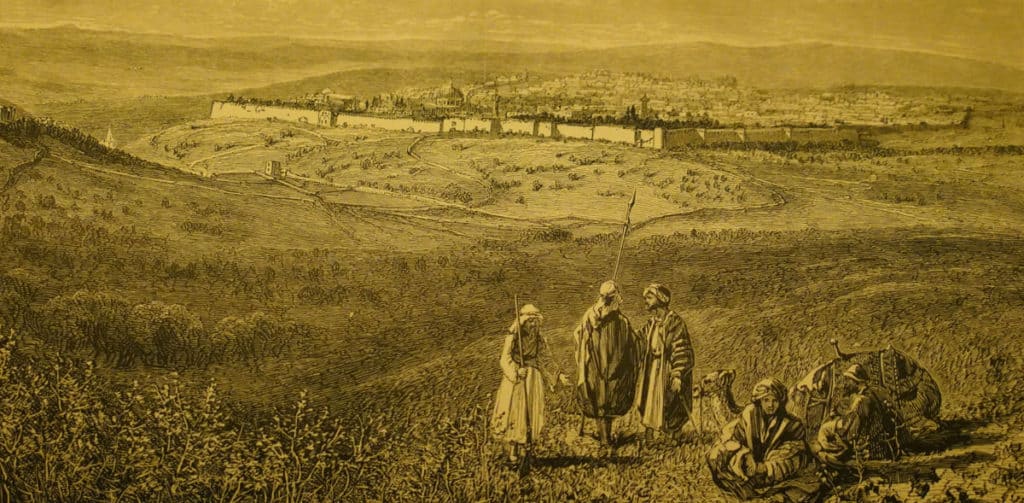
Scripture texts in this work are taken from the New American Bible, revised edition © 2010, 1991, 1986, 1970 Confraternity of Christian Doctrine, Washington, D.C. and are used by permission of the copyright owner. All Rights Reserved. No part of the New American Bible may be reproduced in any form without permission in writing from the copyright owner.

